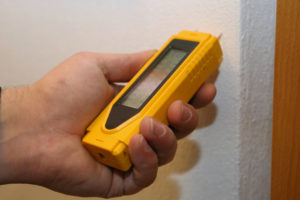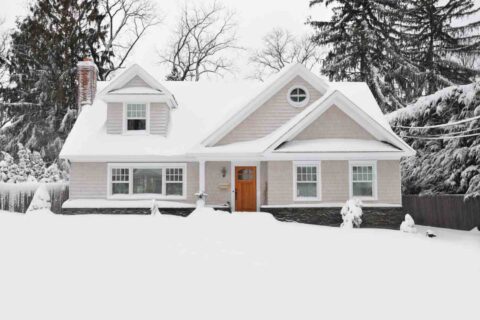Spotlight on Mold Remediation
 If you’re like most homeowners, the very thought of mold in your house makes you shudder. Mold is problematic in many ways, not least because it can cause health problems and is very difficult to eradicate. Fortunately, there are professionals who are experienced in mold remediation and can help you.
If you’re like most homeowners, the very thought of mold in your house makes you shudder. Mold is problematic in many ways, not least because it can cause health problems and is very difficult to eradicate. Fortunately, there are professionals who are experienced in mold remediation and can help you.
First, let’s talk about how you can identify signs of mold in your house.
- If your allergies are really acting up, or you’re having other medical symptoms, mold could be the culprit. Sneezing, sore eyes, a runny nose, and nasal congestion are all common allergic reactions to mold. If your allergies are bad when you’re at home, but get better when you go out, it’s very likely that you have mold. Neurological symptoms like headaches, trouble concentrating, shortened attention span, dizziness, or memory loss can be the result of toxic mold growing in your house. Mycotoxins from toxic molds cause much more severe symptoms than the allergic symptoms caused by non-toxic molds.
- A moldy smell may alert you to mold in your home. Even if you can’t see mold, don’t ignore a moldy smell. Instead, thoroughly inspect your home until you find the source of the mold. Leaving it alone will cause it to grow into a much larger problem. If you can’t find it, call in a professional to find it for you.
- Sometimes the mold growth is visible. However, small growths f mold may go unnoticed if you mistakenly think it’s soot or dirt. Then too, sometimes people ignore visible mold, thinking it’s too small to matter. If you don’t take care of mold, though, it will grow and cause major problems. What’s more, visible mold growth can indicate the presence of a hidden mold colony that’s much larger, underneath what you can see. How can you identify the presence of mold? It comes in different colors, from black, to pink, to gray-green, to white.
- Signs of water problems are also signs of mold. You can assume that if you’ve had long-term moisture problems, you’ve almost certainly got mold. Indications that you’ve got a moisture problem include water stains or discoloration on the walls, floors, or ceilings of your house. Often, there’s mold growing behind these patches of discoloration. If your walls are bowed, bulging, or warped, or have a surface that’s peeling bubbling or cracking, there’s moisture involved. Likewise, if you notice surface abnormalities like warped or bulging paint or wallpaper, they’re probably concealing mold.
- If your house has flooded in the past, there’s probably growing in out of the way places. The basement is a likely spot for mold growth after a flood, so thoroughly check it out, along with any other area where floodwater remained for a long time. Be aware, mold often grows where it can’t be seen, behind walls and under floors.
- Condensation indicates moisture, which could be feeding a mold problem. Condensation accumulates on surfaces like glass windows or metal pipes, and mold often grows where that condensation has built up. If you’ve got rusting pipes, that’s a sign of condensation that could indicate high humidity in the house, which can mean a mold issue.
How can you prevent mold from invading your home? Reducing the humidity level in your house can help, as can fixing water leaks or a leaky roof immediately. If you have a crawlspace, make sure it’s got adequate ventilation, and if you experience flooding, clean the flooded area immediately. Be aware, also, that too many houseplants can also raise your risk of mold.
If you have a mold problem, it’s important to get rid of the mold as quickly as possible. Doing it yourself, however, is typically a bad idea. Mold often needs specialized solutions, and if it’s not completely removed it can come back and cause health issues. Trying to get rid of mold on your own often means battling the same mold over and over again. The safest and most effective way to do this is to call in mold remediation specialists, who can determine what kind of mold is in your house and then remove it from your home. Using the right tools and chemicals to remove every trace of mold from your home, a mold remediation team will get rid of the mold without endangering your family’s health. What’s more, the team can identify the problems that caused mold in the first place, and help you prevent future mold issues.
If you’re looking for help from mold professionals, call Budget Waterproofing and we’ll send out an experienced team of mold remediation specialists. At Budget Waterproofing, we’ve got more than 55 years of experience servicing both commercial and residential customers throughout Maryland. We’re proud of our craftsmanship and confident in our skills, and all of our technicians are fully licensed, insured, and bonded. Whether your problem is moisture, humidity, or mold in your basement, we have the experience and know-how to provide the solution. For more information, call 410.690.4970 or contact us through our website.

